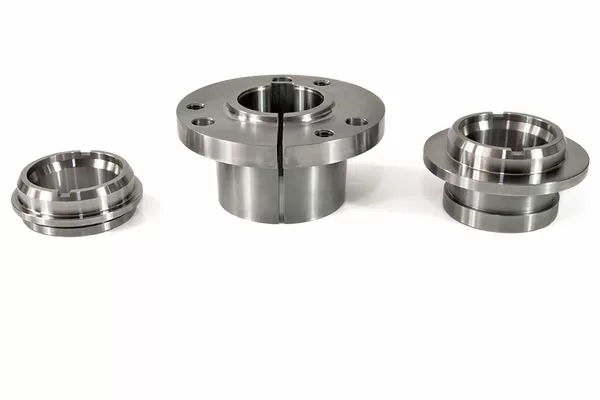The invention of CNC milling stretches back five decades. Since its inception, Computer Numerical Control machining garnered a reputation for automation and precision in product prototyping and manufacturing, leading to the development of three and five-axis machining technology.
Today, CNC machining is used for product prototyping and manufacturing in industries where precision and accuracy are essential to success. The aerospace, medical, and automotive sectors all utilize CNC-machined components, parts, and products.
What’s the Difference Between Traditional Machining & CNC Milling?
With conventional machining strategies, the machinist uses the milling machine to remove material from a workpiece, uncovering the finished design. The machinist works off drawings of the component given to them by the designer or company requiring the manufacturer of a prototype.
The machinist turns dials, wheels, vices, and chucks on the machine to adjust the workpiece and tooling during the cutting project.
The CNC machine performs all the same functions as the traditional milling machine. Drilling, boring, grinding, and cutting processes are handled by an automated computer system working off a CAD drawing rather than the machinist’s expertise.
The code-driven, automated CNC machine offers precision results, with tolerances as low as five microns – that’s the width of a human hair.
CNC machining is suitable for digital production processes, even low volume runs or prototyping projects.
The CNC code used in these machines’ features “Cartesian” coordinates, allowing the device to operate in several spatial coordinates or axes.

CNC milling parts
The CNC Machining Process Explained
CNC machining relies on a subtractive process where the technician fixes the workpiece to the machine, and the CNC tools remove material to reveal the final form of the product or component.
Boring pathways, drilling holes, tapering, and shaping material are just another day at the office for the CNC machine. This process contrasts with other prototyping technologies, such as 3D printers, which we classify as “additive” manufacturing because we add material to the part.
CNC machining processes offer manufacturers a versatile production tool to use on various materials, including plastics, metals, wood, foam, and other composite materials.
As a result of its versatility, the CNC machine is a popular tool for prototyping and mass manufacturing of products in many industry sectors.
Manufacturers looking to mass-produce simple components featuring fine tolerances and mechanical properties will find CNC milling as the best option for many production scenarios.
Several factors must be considered to ensure the manufacturer achieves the best results from their CNC projects. There are three, four, and five-axis milling machines, each of which suits a different task.
Manufacturers should consider the following four questions when selecting the right CNC technology for the project.
- How does the heat of the drill bit affect the composition of the materials used in the project?
- What vibrations can the technician expect that reduce precision cutting?
- What size drill bit is suitable for the project?
- Can the tool provide the features you need to mill?
CNC Machining – Reliable, Robust, Timely, & Accurate
CNC machining tasks like turning and milling offer manufacturers highly predictable and accurate processes. It’s possible to achieve impossibly tight tolerances between +/-0.001″ to 0.005″, depending on client specifications.
Technicians can program CNC machines to run 24 hours a day, seven days a week, without interruption. This feature makes it ideal for mass-production purposes of precision-milled parts, with runs producing over 10,000 components.
Turnaround times for parts can be as little as 24 hours, and with other supply chain components factored in, it’s possible to have a prototype ready within a week.
Another benefit of CNC machining is its mechanics. Cutting forms from blank material means it retains its initial properties. This is different from other processes, like plastic injection molding, where the material changes state during production.
CNC milling machines and tools can cut up to 50 alloys, metals, plastics, and composites. Some of these materials include bronze, brass, stainless steel, aluminum, titanium, ABS, PEEK, and zinc. If the material has sufficient hardness to allow clamping, you can process it with a CNC milling machine.
In Closing – CNC Milling Cost Advantages
CNC machining is ideal for prototyping projects. However, it can be expensive since the cost to set up the machine is the same whether you’re manufacturing one or one thousand parts in a production run.
Setup costs are the bulk of the expense in manufacturing scenarios. Therefore, it’s advisable to use large production runs to mitigate and spread setup costs.
When manufacturers use CNC machines to produce thousands of items per run, they’ll see the biggest cost advantages for their business. Typically, the production cost per item will plateau around this mark.
Manufacturers can mitigate waste and reduce inventory costs using a structured batch production method.
3-axis CNC milling machine configurations offer the most affordable side of the technology, while 5-axis machines can be very expensive to set up and run.
